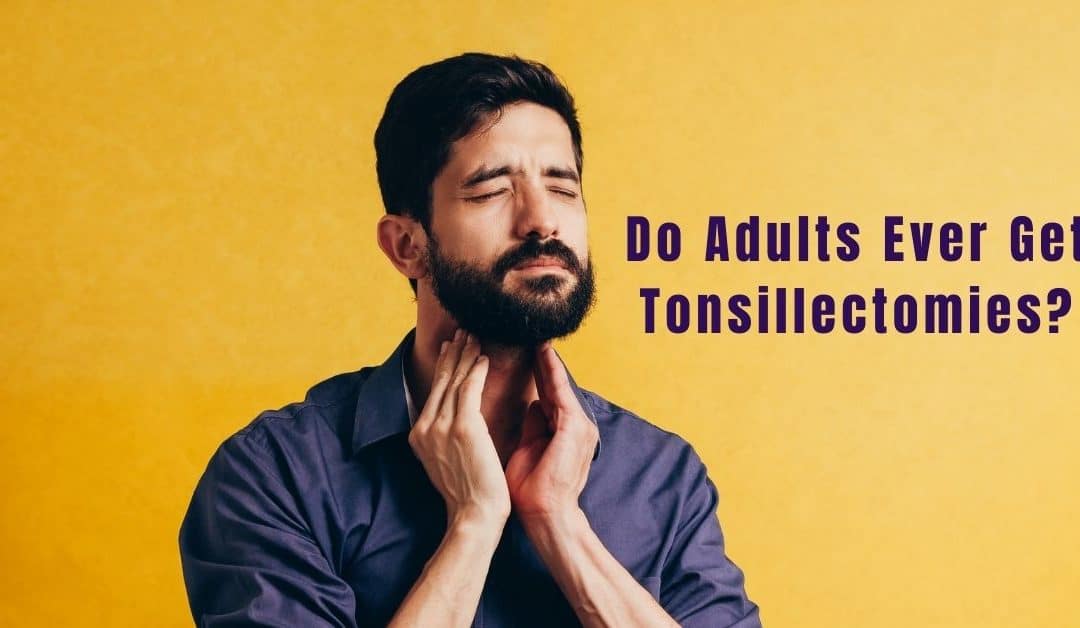Although they are a useful part of the immune system, tonsils can also impact health by becoming infected. They can even experience chronic infection which may be best treated by removing them. Although tonsillectomies are more commonly performed on children and teenagers, they can also be an effective option for adults.
Understanding Tonsillitis
Tonsillitis is a condition that describes the swelling and infection of the tonsils. This is caused by viral or bacterial infection and creates various symptoms including the following:
- Extreme throat pain or sore throat
- Swollen tonsils, redness of the tonsils
- Swallowing is difficult
- Fever, headache
- Inflamed lymph nodes
- Sleep apnea
Usually tonsillitis is treated either by over the counter medications that alleviate symptoms while it naturally subsides or antibiotics if the cause is a bacterial infection (versus viral). Some people can experience recurring tonsillitis which may be best addressed with a tonsillectomy. Typically, chronic tonsillitis means that a person’s tonsils have been infected several times in one – two years. In addition to treating tonsillitis, tonsillectomies may be an effective treatment option for people who:
- are allergic to antibiotics
- do not respond to antibiotics
- symptoms significantly affect daily life
- pus builds on tonsils
Though children and teens are more prone to tonsillitis, it is a condition that adults can also experience.
Adults & Tonsillectomies
Kids and teenagers are more exposed to bacteria (school being a primary source of exposure), leading to infection. Tonsillitis most commonly occurs in people ages 5 to 15 which is why tonsillectomies are more commonly performed on younger age groups. However, adults can also develop tonsillitis and opt for a tonsillectomy. This is less likely and less common but is a possibility nonetheless.
There are no major differences between a tonsillectomy for adults and for children. The surgical procedure is the same for people of all ages. There are two types of tonsillectomies which involves either:
- partial: only part of the tonsils is removed
- complete: the tonsils are completely removed
Your doctor will identify which option is best suited for you. The only minor difference for adults can be the recovery time. Because adults have larger tonsils, the surgical area is also larger so it can take adults a little longer to recover. Children and teens usually take about one week to fully recover and resume daily activities while adults can take up to two weeks. Additionally, recovery recommendations are also the same for adults:
- take pain medication as needed
- drink a lot of fluids
- avoid strenuous activities
- eat easy foods
Tonsillectomies do not present additional risks for adults as the procedure is the exact same. Like all medical treatments, it is important to be aware of the benefits and risks associated with tonsillectomies and general recovery information.
Benefits & Risks
Their risks posed by tonsillectomies are similar to the risks that are associated with surgical procedures more generally. The most significant risk is substantial post-operative bleeding. People may experience small amounts of blood which is not particularly dangerous. But if the bleeding is significant, which can be life-threatening, then people should see a doctor immediately. This is not a common occurrence.
The most significant benefit of a tonsillectomy is that once the tonsils are removed, they can no longer become infected. This alleviates chronic tonsillitis and the symptoms it produces which can profoundly impact daily life. It is also important to be aware that even with a tonsillectomy, other parts of the throat can still be infected. This means that people can still experience strep throat though students have shown that people who have removed their tonsils are less likely.
If you experience chronic tonsillitis as an adult, a tonsillectomy could be a suitable treatment option for you. Be sure to discuss this option with your doctor and further discuss more about the procedure!

